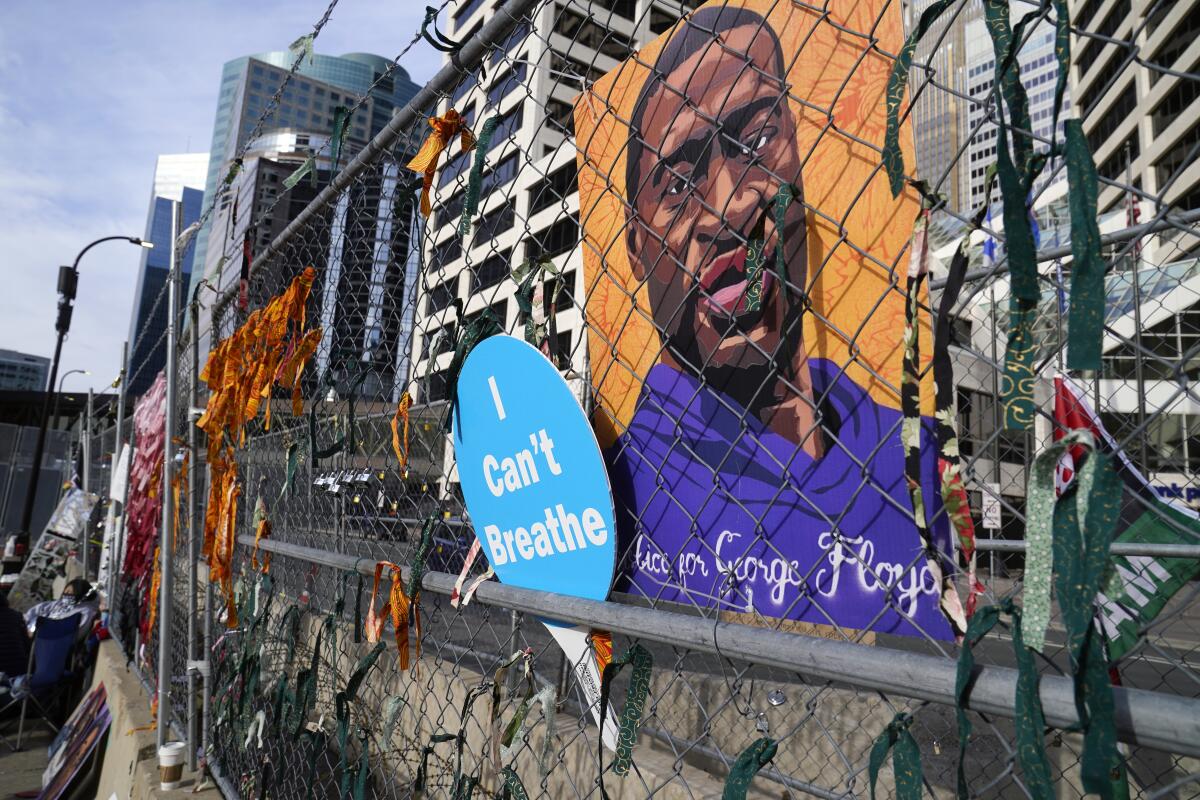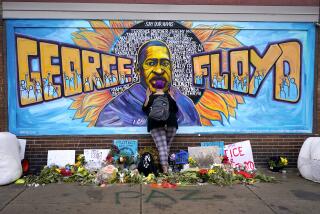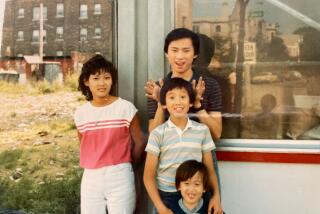Can George Floyd get justice when Vincent Chin couldn’t?

- Share via
Prosecutors opened their case this week in the murder trial of Derek Chauvin by showing jurors the disturbing video, lasting 9 minutes and 29 seconds, of George Floyd’s death. As that trial began, surveillance footage capturing a brutal assault against an elderly Asian American woman in New York City went viral.
As I’ve watched the Chauvin trial unfold this week, I’ve found myself thinking a lot about Vincent Chin.
The murder of Vincent Chin is one of the starkest examples of racism and injustice in American history, but a lot of Americans probably don’t remember it well.
In 1982, Vincent Chin, a Chinese American, was brutally killed by two white men in Detroit. The two assailants, Ronald Ebens and his stepson Michael Nitz, were out-of-work autoworkers who reportedly blamed their plight on Japanese automakers and Asian Americans. Think about that the next time you hear a Republican refer to immigrants as people who are coming here to take your jobs.
Ebens and Nitz tracked Chin to a McDonald’s and beat him to death with a baseball bat. Ultimately, the two were sentenced to three years of probation and ordered to pay a $3,000 fine. They didn’t spend a single night in jail. Why? Because the presiding judge, Charles Kaufman, openly said, “These weren’t the kind of men you send to jail.”
A decision like this sent the clear message that if you were an out-of-work white man in America, you could murder an Asian American, just as long as you can afford the $3,000 fine.
This was a stunning and bleak illustration of a justice system completely failing a community of color. Almost 40 years later, the system is once again facing a generation-defining moment in the effort to obtain justice for George Floyd.
I can’t think of another time in my life when two communities of color were simultaneously at the forefront of the national conversation in America. It’s infuriating that it takes such tragedy and hatred to draw sustained attention to our collective struggle for justice. The Asian and Black faces you see on TV this week should be visible year-round, not just when “minority” issues are leading the news. Absent that representation, historical context often is overlooked.
Any conversation about race requires nuance and an understanding about each community’s experience and struggles. The history of racism in America against African Americans, Latinos, Asians, Middle Easterners, etc., is distinct and unique. There are also well-documented tensions within different minority communities that have produced some very ugly chapters of violence as well.
But in spite of those differences, there is also a commonality that stretches beyond our individual histories. Injustice against one of us is injustice against all of us.
The echo of the Asian American community’s call for justice for Vincent Chin can be faintly heard in the grief and outcry from the Black community in pursuing justice for George Floyd. And while they were two distinct acts of violence against two different communities, the system that ultimately failed the Asian American community is one that has repeatedly failed the African American community. That system remains just as imperfect today as it was in 1982.
If history has taught us anything, it’s that the pace of change has come too slowly. We’ve done our best to pursue change as separate communities. This is the moment we can unite, organize, advocate and pursue that change together.
Kurt Bardella, a Korean American, is a contributing writer to Opinion. @KurtBardella
More to Read
A cure for the common opinion
Get thought-provoking perspectives with our weekly newsletter.
You may occasionally receive promotional content from the Los Angeles Times.









